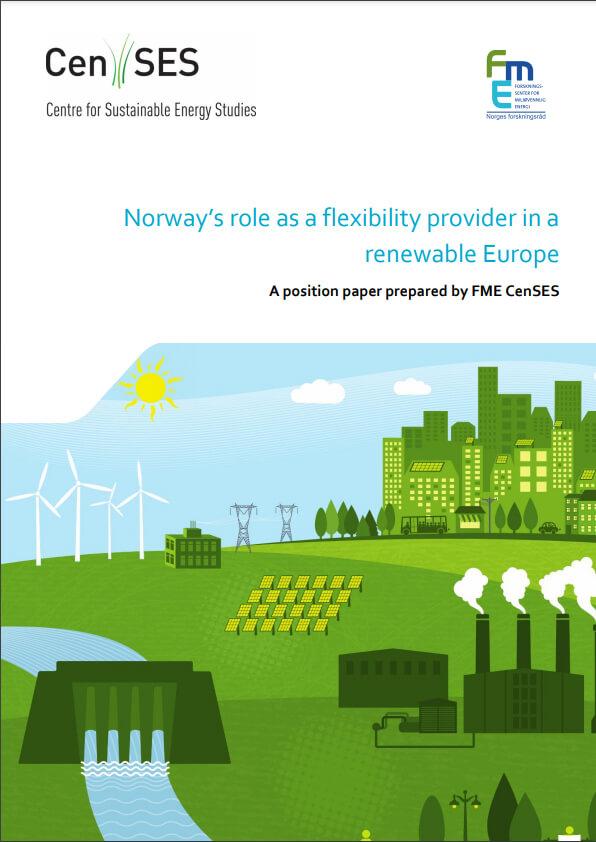Norway's Role as a Flexibility Provider in a Renewable Europe
Norway's Role as a Flexibility Provider in a Renewable Europe
This report focuses on Norway's flexible hydropower, natural gas and wind power, and how it can play a role in the transition of the European power system towards 2050.
The report points to periods with large amounts of deficit energy and surplus energy, due to variability of wind and solar power. Europe will need flexible alternative over multiple time scales ranging from minutes to weeks, even seasons.
Using the EMPIRE model, developed by FME CenCES, we look at the long-term investment decision and the operational uncertainty of the power system with renewable generation. We present two different scenarios: Assuming CCS (Carbon Capture and Storage) technologies are implemented commercially, and one assuming CCS is not available.
The analysis shows that when CCS is allowed, the use of natural gas is substantial, effectively doubling the share of natural gas in the mix compared with the situation without CCS, but the system is still dominated by intermittent renewable and hydropower production. This confirms that Norwegian renewable resources are attractive in both scenarios.
The analysis suggests that a full development of this onshore wind potential along with some investments in new regulated hydropower will provide the optimal strategy for utilization of Norwegian resources when decarbonizing European power. In addition, a substantial amount of offshore wind is suggested (This was discussed further in a newer report).
Based on the research, we put forth several recommendations if Norway wants a larger role as a provider for flexibility provider.
Author list: Christian Skar, Stefan Jaehert, Asgeir Tomasgard, Kjetil Midthun, Marte Fodstad
Download: Norway’s role as a flexibility provider in a renewable Europe (short version)
Download: Norway’s role as a flexibility provider in a renewable Europe (full report)
